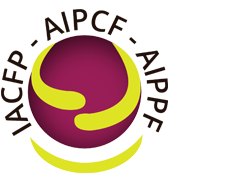The psychoanalytical multi-family group
Norberto Mascaró Masrí (Bilbao, España)
The Psychoanalytic Multifamily Group is a hierarchical therapeutic space for the treatment of various mental pathologies. Composed of several families, it represents a mini-society of families from different backgrounds and with different problems who participate in a common experience, where they can share their psychic suffering, confront their difficulties and be supported over time.
These large groups of 30 to 100 people are led by a variable number of professionals who work in co-therapy. They meet once a week and each session lasts 90 minutes.
They work with the idea of spontaneous framing, as opposed to the classical framing that takes into account the pre-established contract and with the therapeutic attitude of availability as the foundation of the therapeutic relationship. The concepts of assistance and support are the pillars of the creation of an emotional climate of trust that enables the participants to connect with the experiences of helplessness and helplessness, suffering, violence, etc., which, due to their intense emotional charge, could not be elaborated in the process of growth and maturing of the personality.
The pioneer in this type of experience is Jorge Garcia Badaracco, who in 1958 began in a psychiatric service of the Neuropsychiatric Hospital José T. Borda in Buenos Aires to carry out these groups in the context of a psychoanalytic Therapeutic Community. He continued his activity in a private clinic which he directed for 25 years and nowadays he continues to carry out this work in psychiatric institutions, associations, schools, clubs, etc. From this long and prolific experience he has recorded nearly 1000 hours and has published several books and works that represent an important contribution to teaching and research. Each session is 90 minutes long.
As a corollary of this journey, a new conception emerges which is part of the complex line of thought: Multifamilial Psychoanalysis. This innovative perspective makes it possible to deal simultaneously with the individual, family and social dimensions of the mind, based on the postulate that human beings live immersed in webs of pathogenic interdependencies, from which we must often be rescued. The G.M.F.P. becomes the privileged context in which to carry out this work.
Bibliography
- García Badaracco, Jorge: Psicoanálisis Multifamiliar, Buenos Aires, Paidos, 2000. Traduction française, Psychanalyse multifamiliale, Paris, PUF, 2005.
- Garcia Badaracco, Jorge: La Comunidad Terapéutica de Estructura Multifamiliar, Madrid.
- Guimón, José: Manual de Terapias de Grupo, Madrid, Biblioteca Nueva, 2003.
- Mascaró, Norberto: “Constitución de un Grupo Multifamiliar en una Institución Publica”, Jornadas de la Asociación Andaluza de Neuropsiquiatría, Jaén, 2000.
Bibliografía
- García Badaracco, Jorge: Psicoanálisis Multifamiliar, Buenos Aires, Paidos, 2000. Traduction française, Psychanalyse multifamiliale, Paris, PUF, 2005.
- Garcia Badaracco, Jorge: La Comunidad Terapéutica de Estructura Multifamiliar, Madrid.
- Guimón, José: Manual de Terapias de Grupo, Madrid, Biblioteca Nueva, 2003.
- Mascaró, Norberto: “Constitución de un Grupo Multifamiliar en una Institución Publica”, Jornadas de la Asociación Andaluza de Neuropsiquiatría, Jaén, 2000.
